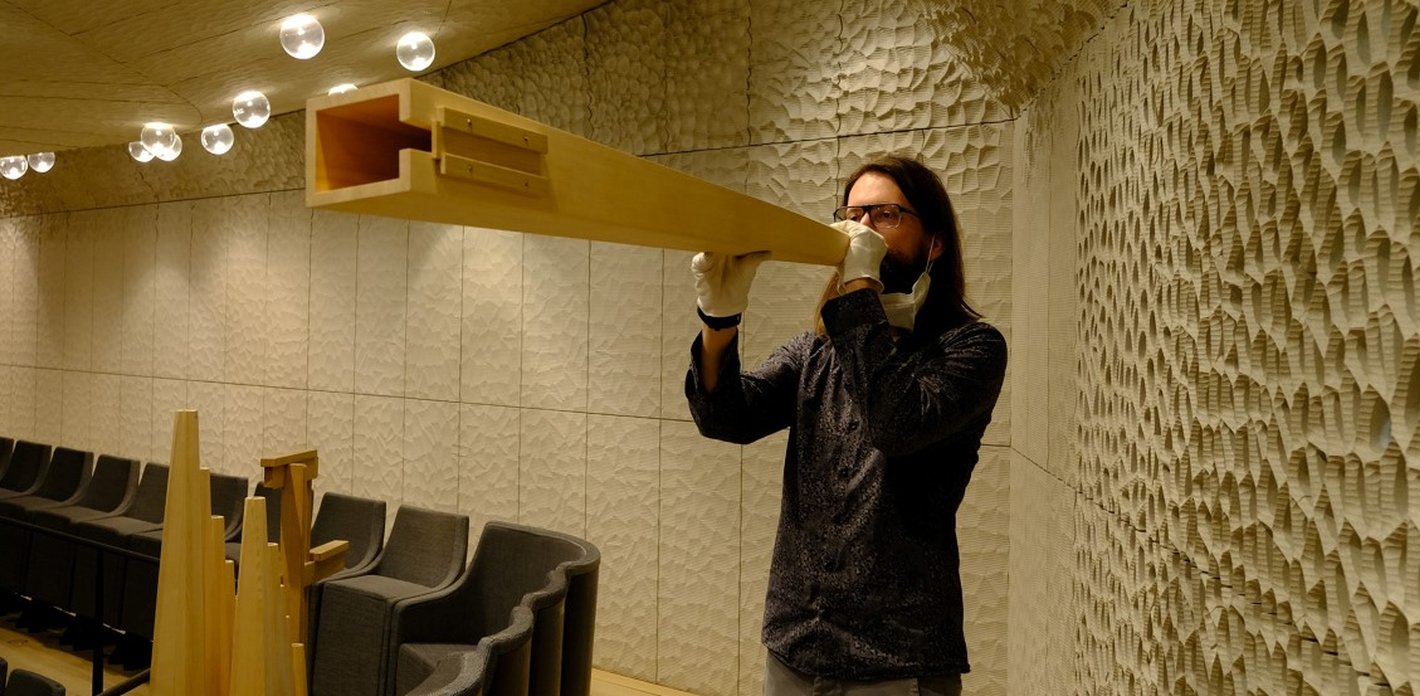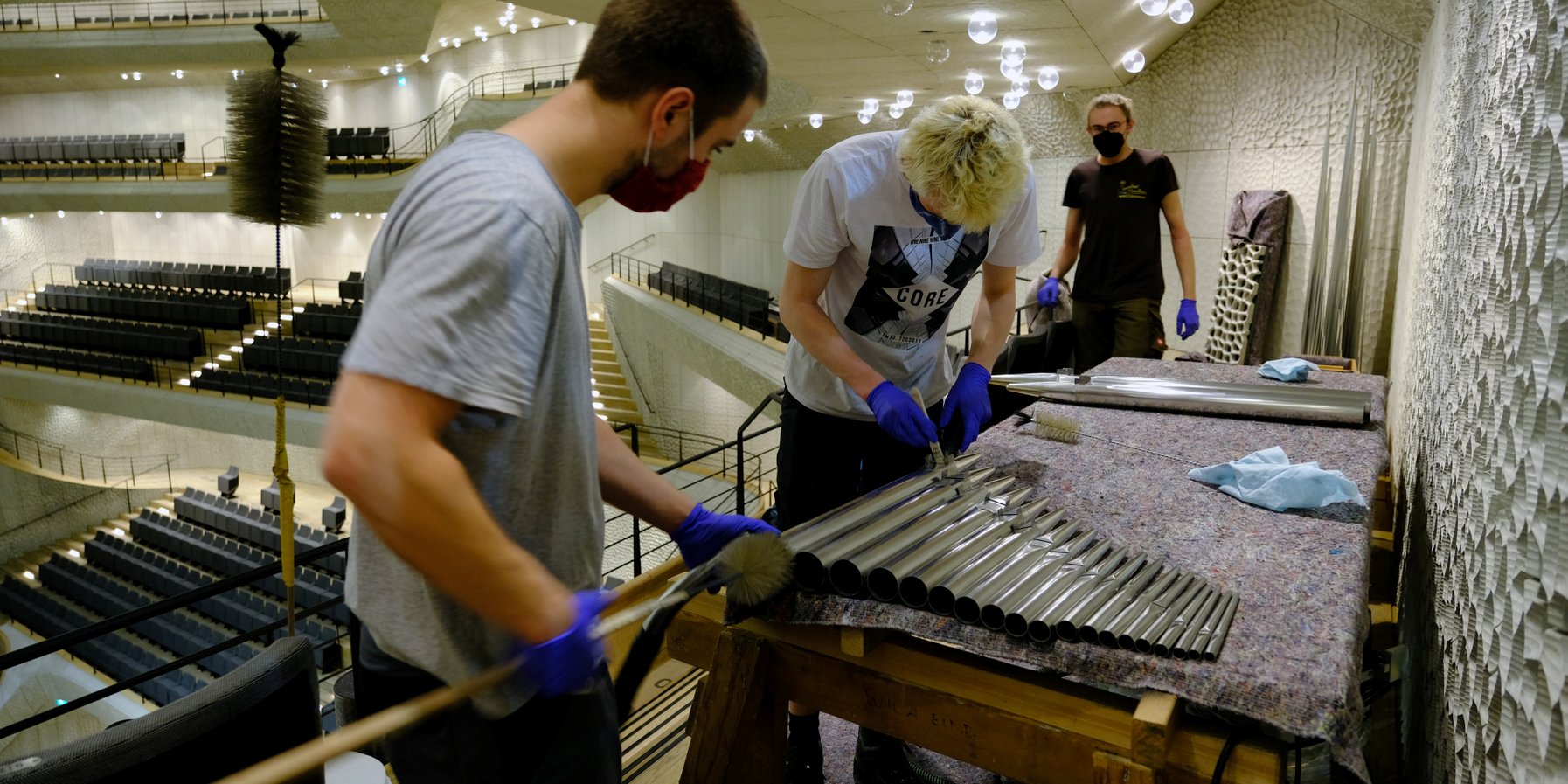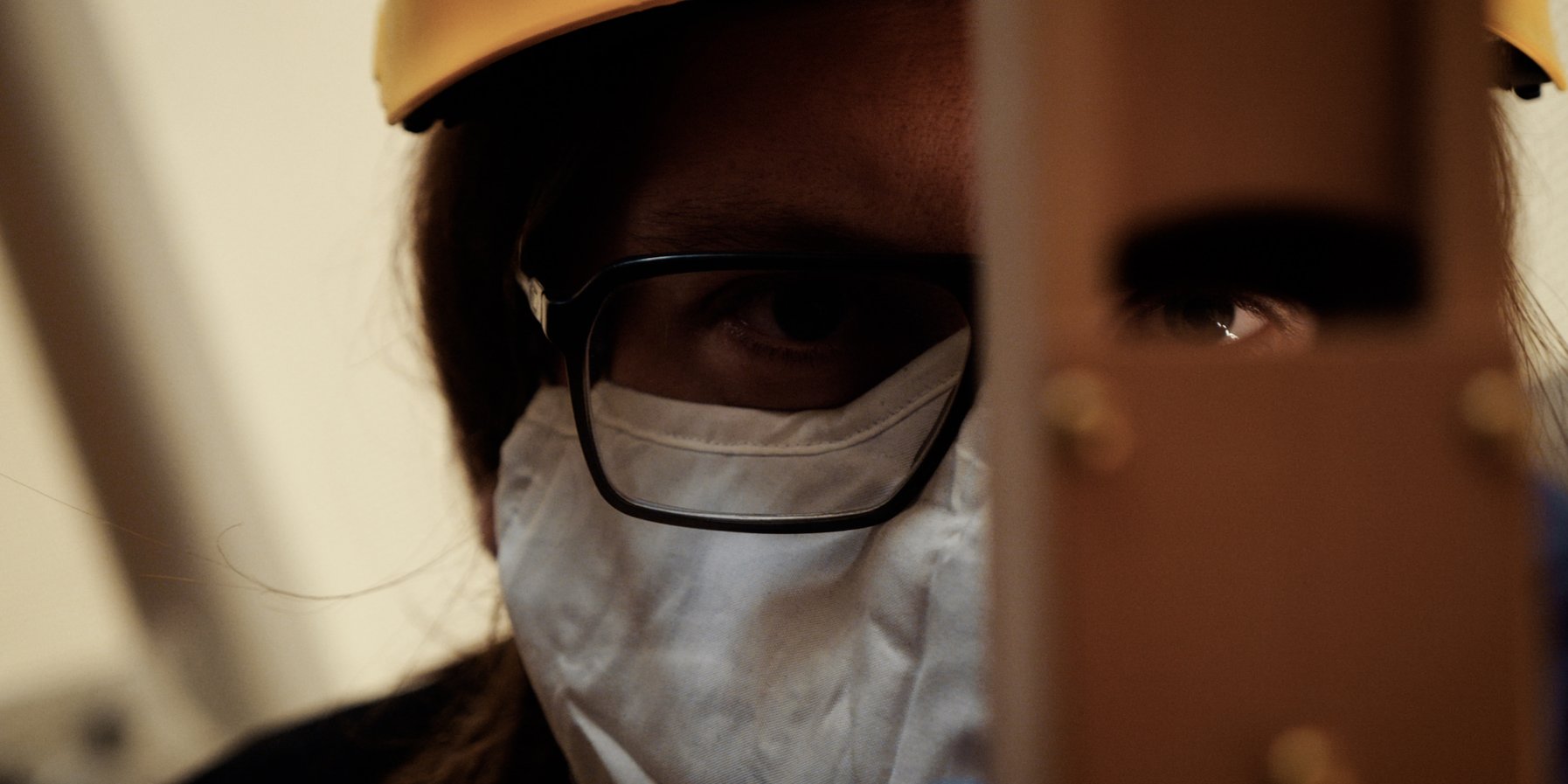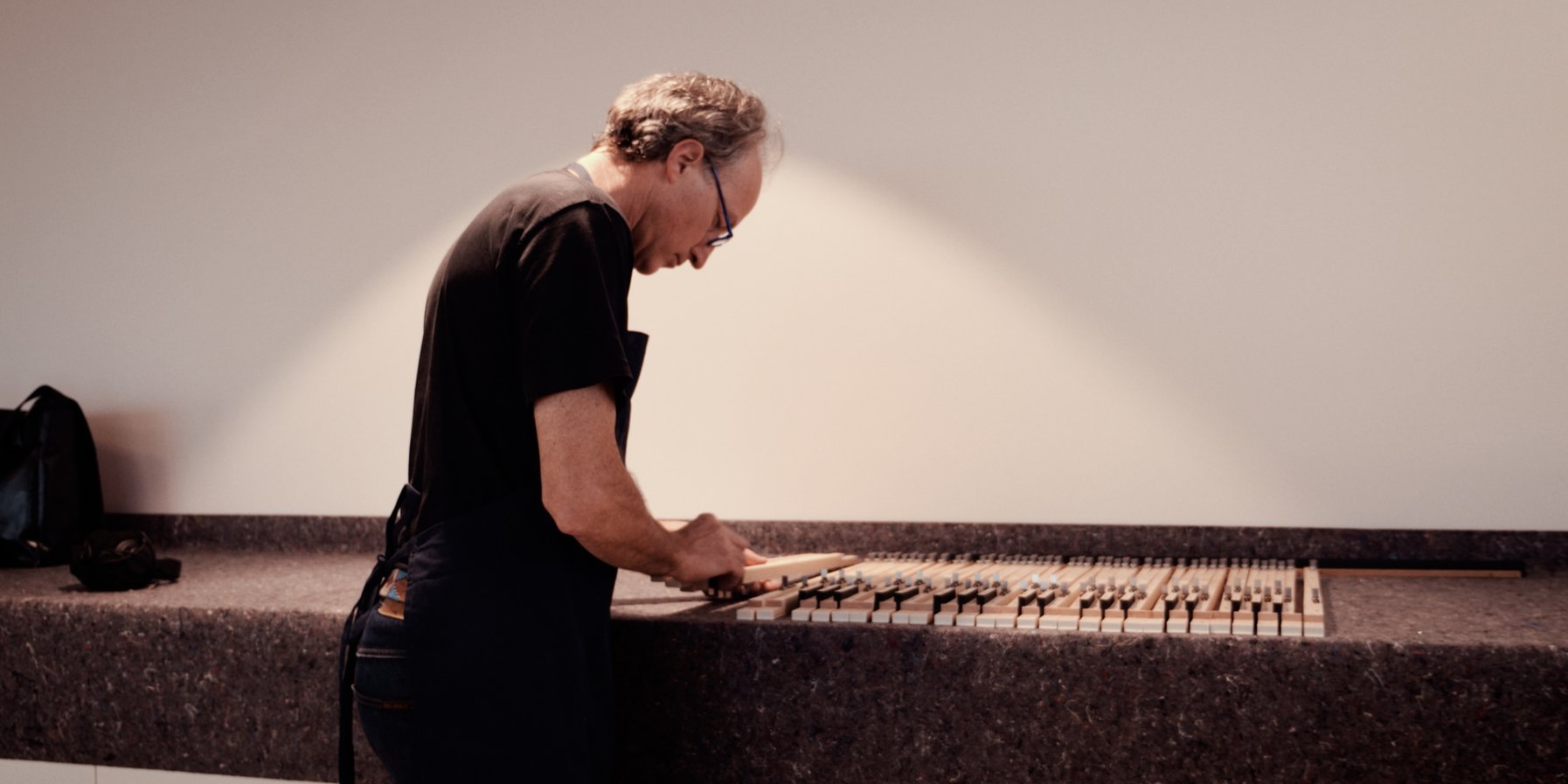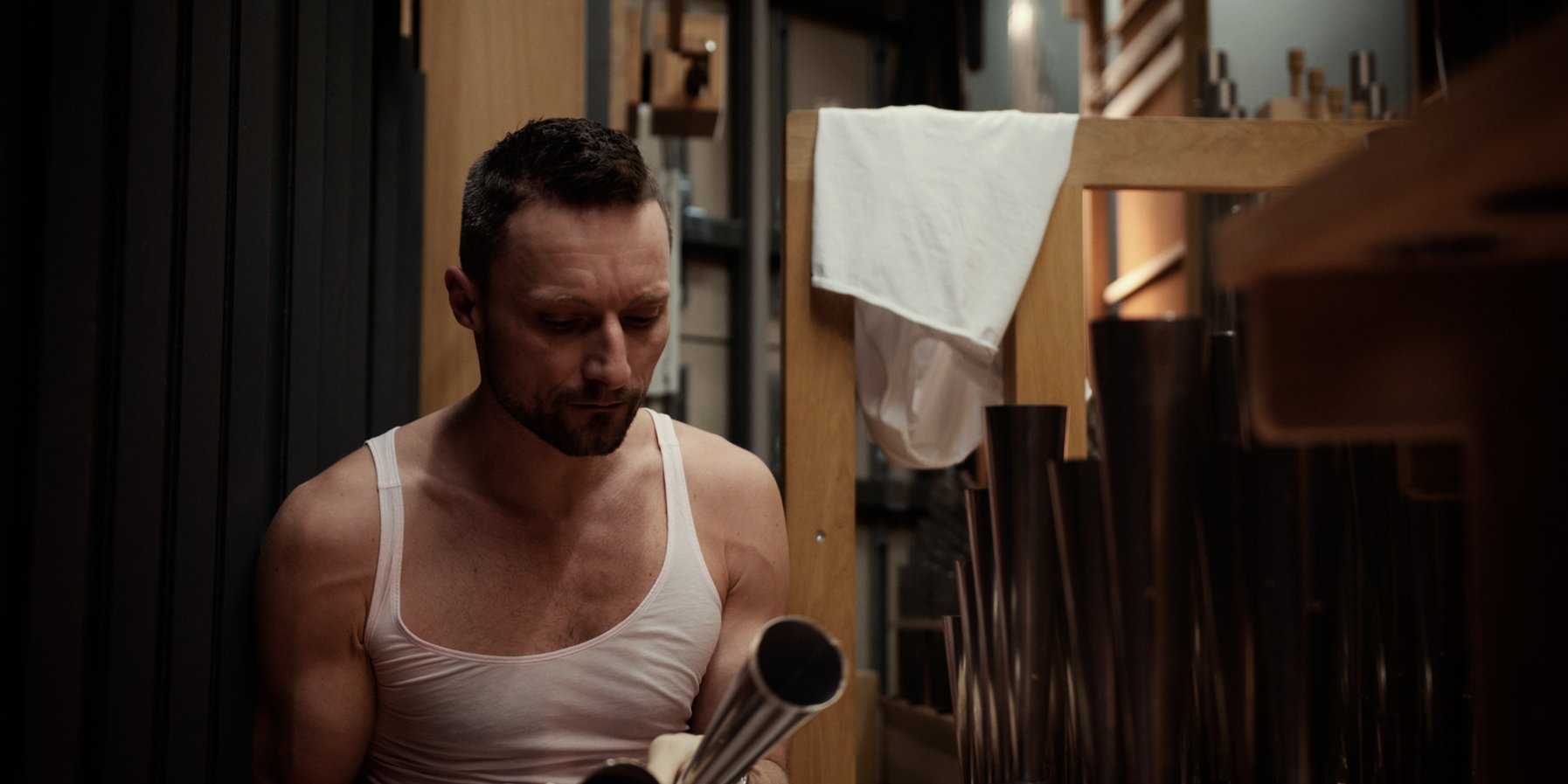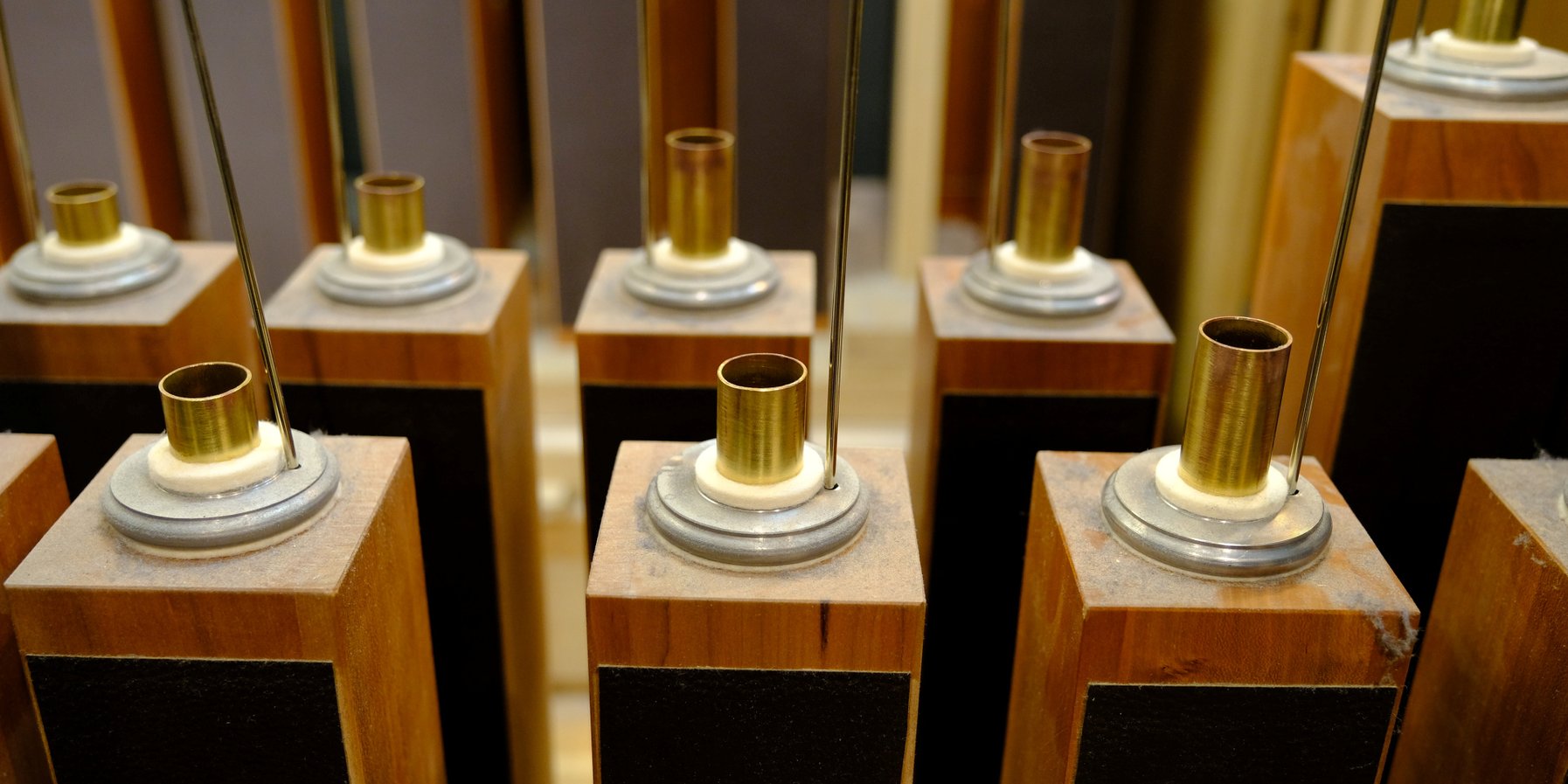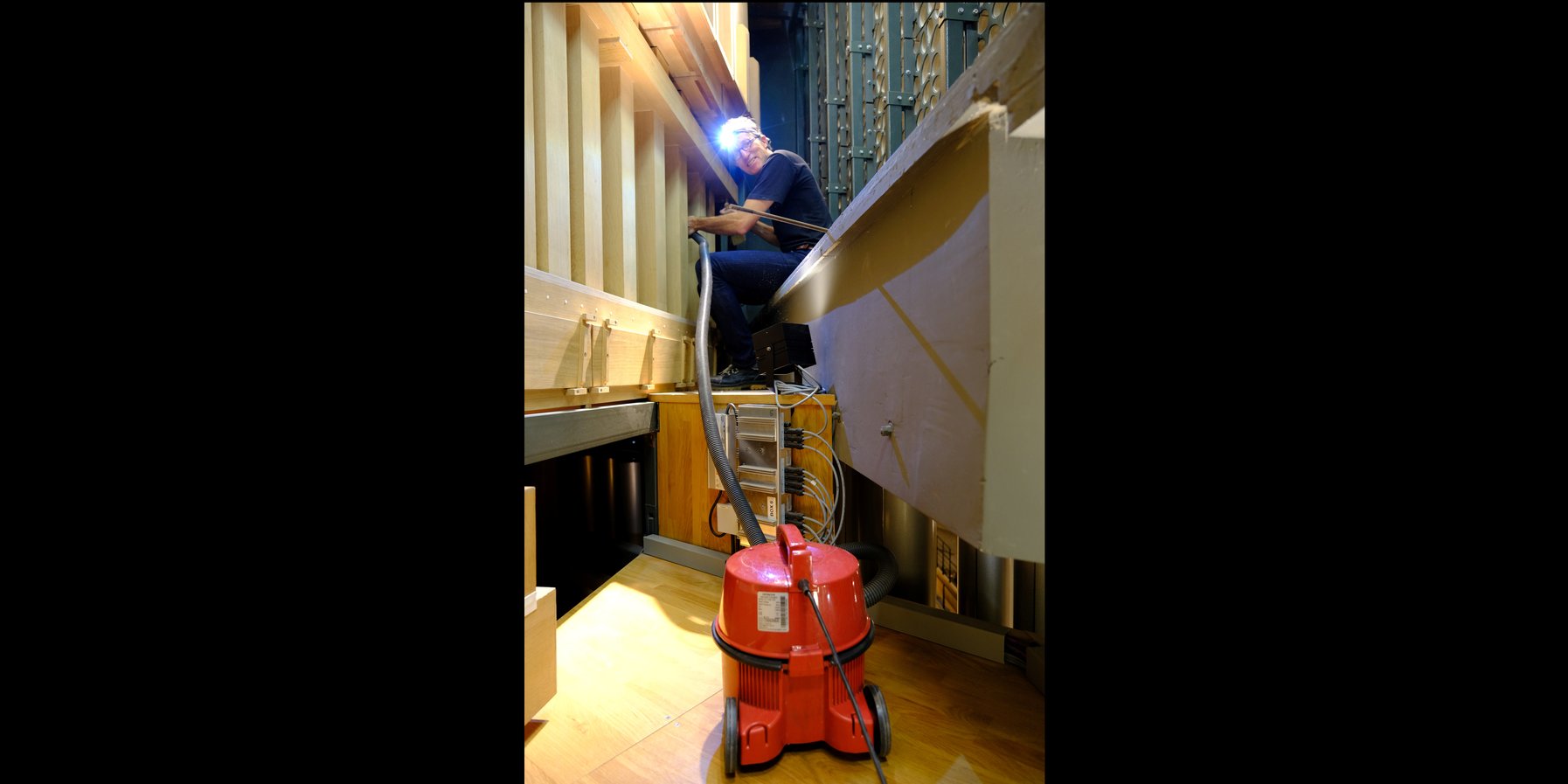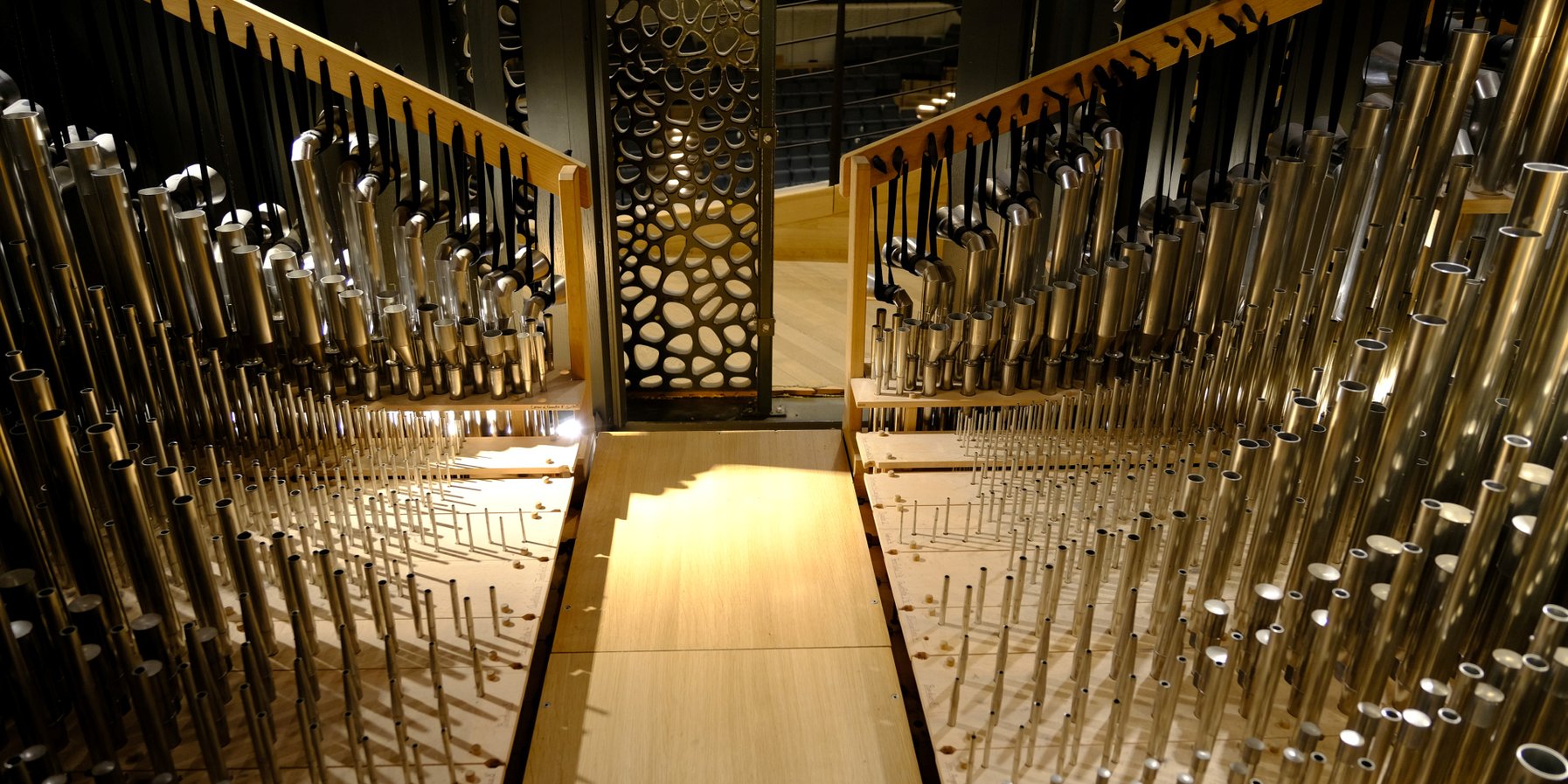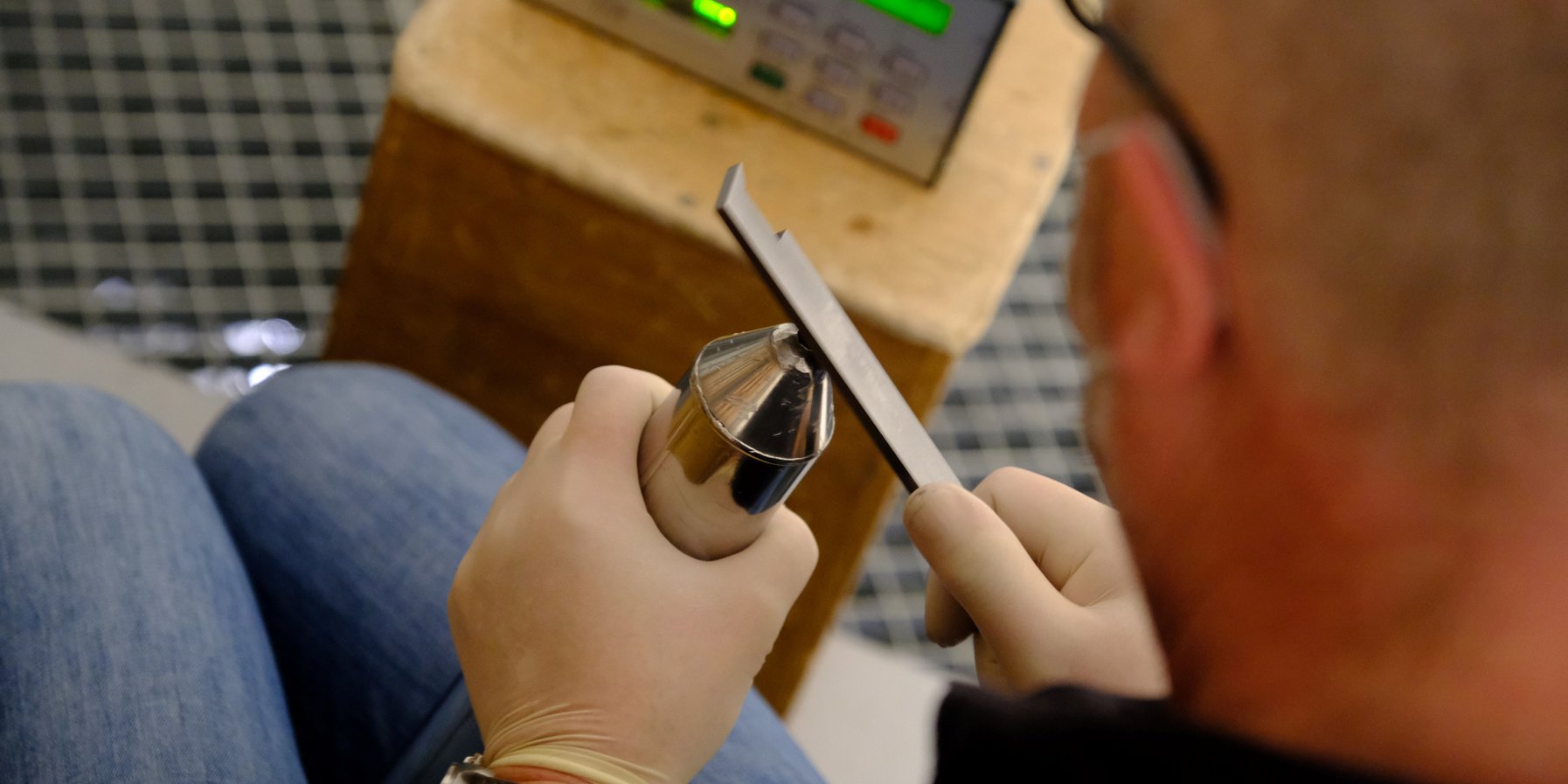Necessity is the mother of invention: While the concert halls remain closed, the Elbphilharmonie is using the compulsory coronavirus break to clean the huge organ in the Grand Hall, which measures 15 metres square and weighs some 25 tons. And that's easier said than done: the 4,765 pipes are arranged in and alongside the terraced rows of audience seating, and a large part of the instrument is even concealed behind the walls of the hall, the so-called »white skin«. A spectacle without an audience – but those interested can watch the proceedings on video, almost in real time.
-
Why does the organ need to be cleaned?
The organ was originally going to be cleaned during the 2021 summer break. But in a change of plans, the cleaning started on 4 January 2021, and will continue during the coronavirus lockdown. A thorough cleaning was actually scheduled back in 2016, when the organ was installed. At that time there was other building work going on in the Grand Hall that caused quite a bit of dust. In order to complete all the work on time, it was decided – contrary to usual practice – to clean the organ only a few years after it was put into operation. That cleaning is now being carried out.
The pipe cleaners :Cleaning the organ in stages
Part 1: The organ is dismantled
If you want to clean an organ, you need to begin by carefully taking it apart. This is a particularly tricky exercise with the Elbphilharmonie instrument: unlike church organs, which are usually free-standing, the organ in the Grand Hall was meticulously integrated into the architecture. In order to get to the individual pipes, wall panels need to be removed, exposing the instrument’s interior. Quite a feat of logistics…
Part 2: Vacuuming and dusting
Once the pipes have been taken out, they are carefully vacuumed and any dust that has accumulated is wiped off. Here, too, caution is the watchword: while the wooden pipes can be dusted without any trouble, the cleaning specialists use gloves when dusting the metal pipes. This way, they avoid liquids on the skin such as perspiration reacting with the metal and altering the shape (and in turn the sound) of the pipes.
»What makes the organ complicated is that it doesn’t stand alone like in a church. At the Elbphilharmonie, the organ is integrated into the seating rows, and all the big pipes, the windchests, the fans and the bellows are concealed behind them.«
Dominik Haubrichs (team leader during installation)
Part 4: The intonation
Once the instrument has been cleaned, it’s time for the intonation experts from organ builder Klais to work their magic. They check the volume, the pitch and the timbre of every single one of the 4765 pipes. Is there a pipe that sounds too high or too low? Is there any undesirable background noise? Is the ratio to the other pipes correct?
